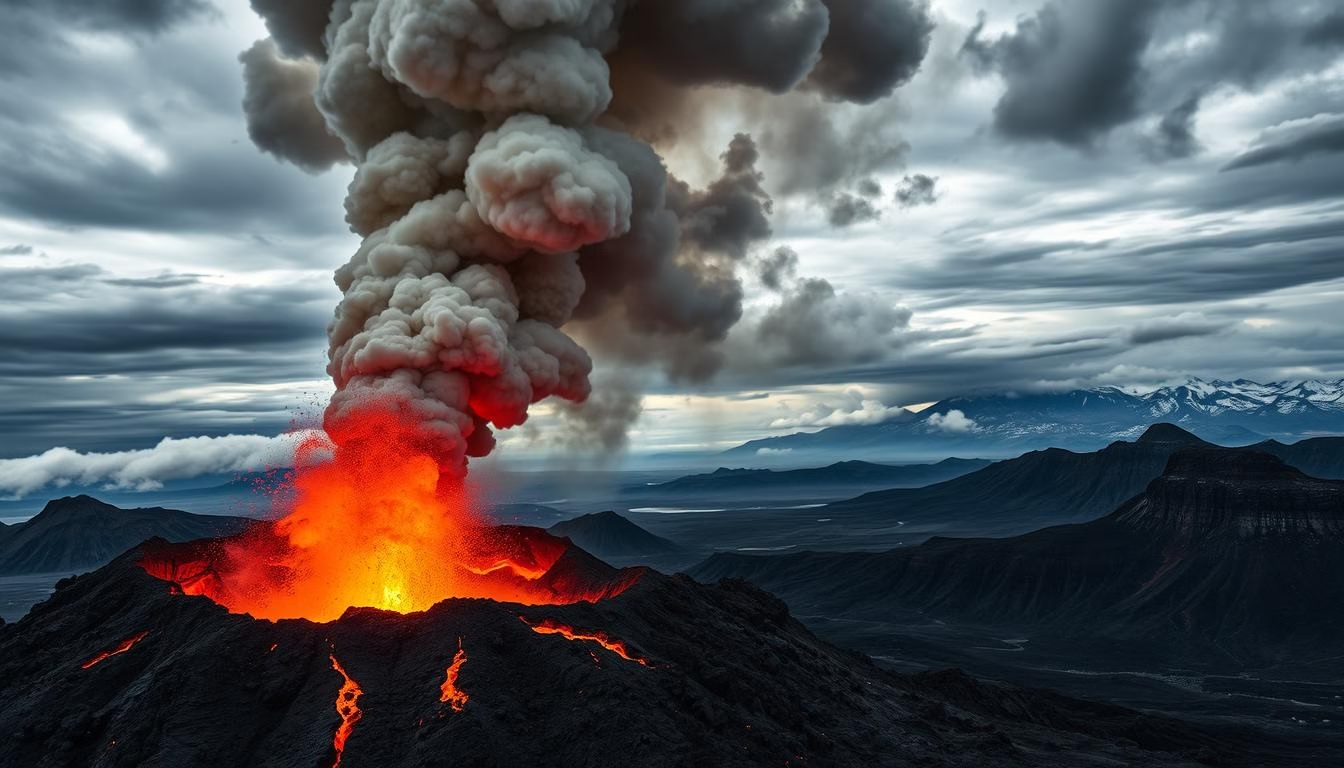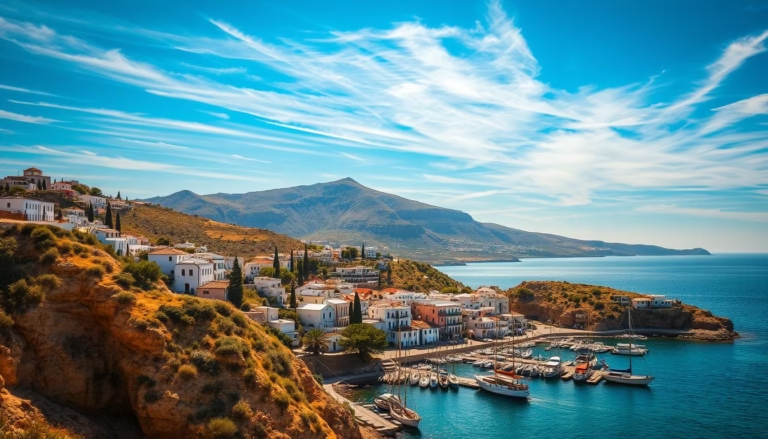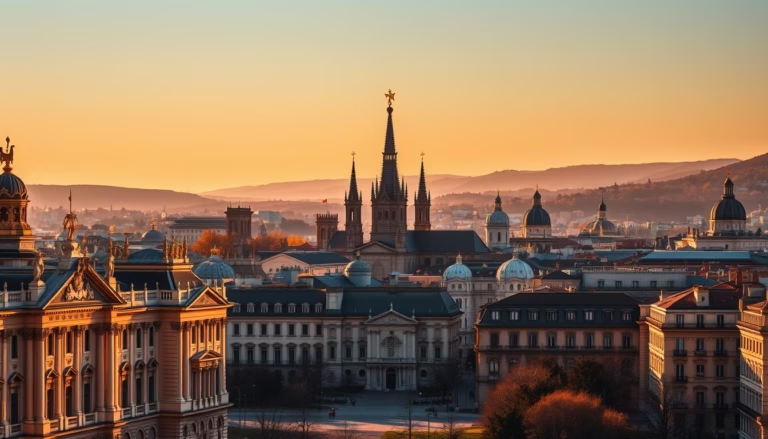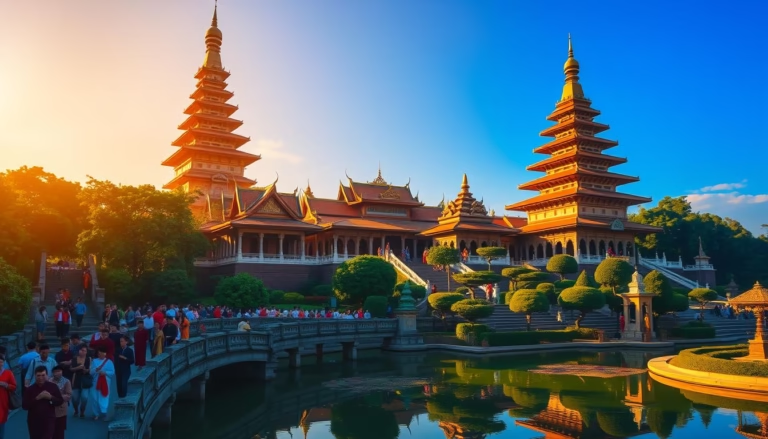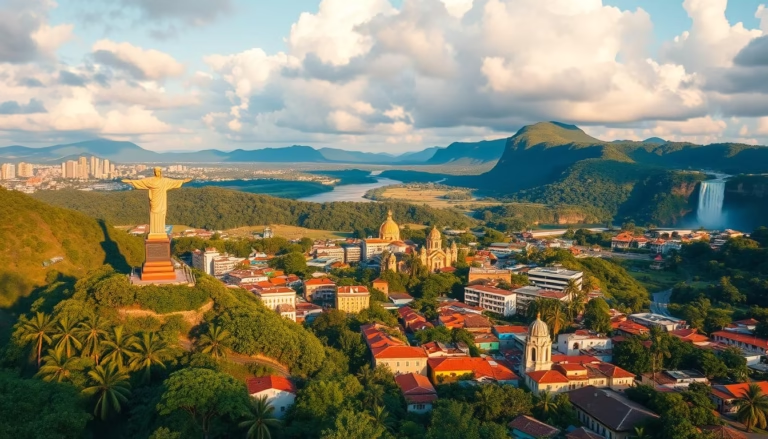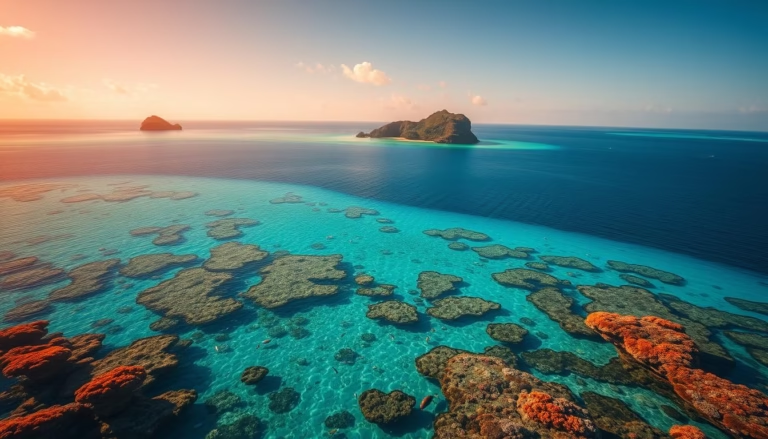Explore the Most Amazing Volcanoes on Earth
Our planet’s fiery landscapes tell stories of chaos and rebirth. In 1980, Mount St. Helens reminded us of nature’s destructive force, flattening forests and reshaping rivers in moments. Yet Iceland’s 2021 Fagradalsfjall eruption revealed a gentler side, painting valleys with molten rock and giving scientists front-row seats to land formation.
These geological wonders connect us to Earth’s primordial past. Snow-capped peaks hide simmering magma chambers, while shield volcanoes slowly build new terrain. Each formation acts as a natural time capsule, preserving clues about our world’s evolution.
Travelers and researchers alike flock to these sites for answers and awe. Some seek adrenaline-pumping adventures near bubbling lava lakes. Others study mineral-rich soils that nurture unique ecosystems. What unites them is curiosity about forces that both destroy and create.
Key Takeaways
- Volcanic activity shapes landscapes through destruction and renewal
- Modern eruptions provide valuable scientific research opportunities
- Diverse formations range from explosive stratovolcanoes to gradual shield types
- Active sites offer unique travel experiences with safety considerations
- Geological processes visible today mirror Earth’s ancient transformations
Introduction to Volcanoes: Nature’s Fiery Wonders
Volcanoes stand as nature’s architects, building and reshaping continents through fiery eruptions. These mountain-like structures form when magma escapes Earth’s crust, creating new land or altering existing terrain. About 80% of eruptions occur along tectonic plate boundaries, where Earth’s puzzle-like crustal plates collide or separate.
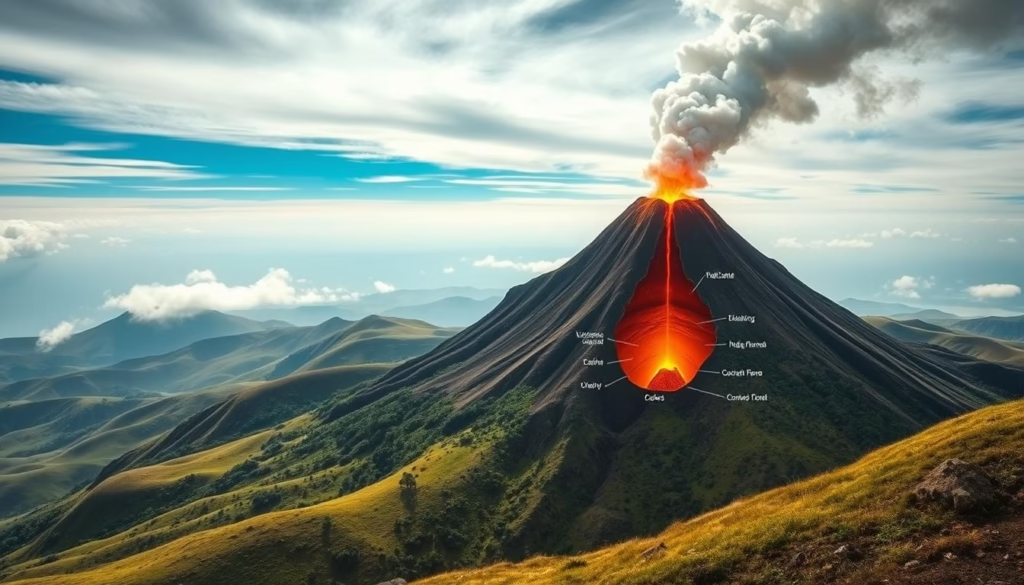
| Location Type | Process | Example |
|---|---|---|
| Divergent Boundaries | Plates pulling apart | Mid-Atlantic Ridge |
| Convergent Boundaries | Plates colliding | Andes Mountains |
| Hotspots | Stationary magma plumes | Hawaiian Islands |
Underground pressure builds like a shaken soda bottle until molten rock bursts through weak crust spots. This lava cools into fresh landforms – from gentle slopes to towering peaks. Scientists estimate 1,500 active volcanoes exist worldwide, with about 50 erupting annually.
These geological powerhouses do more than destroy. Their mineral-rich ash fertilizes soil, while geothermal energy heats homes. Understanding their mechanics helps predict eruptions, protecting nearby communities while revealing Earth’s inner workings.
Understanding Volcanic Eruptions and Their Impact
Earth’s crust occasionally tears open like a pressure cooker, unleashing forces that rewrite geography. These explosive events begin miles below ground where magma fights its way upward through cracks in tectonic plates.
The Force Behind Eruptions
Molten rock accumulates in underground chambers, building pressure until it erupts through vents. The 1815 Mount Tambora explosion released energy equivalent to 800 million atomic bombs – ash reached the stratosphere and caused “The Year Without Summer.”
Pyroclastic flows demonstrate nature’s raw power. These avalanches of superheated gas and debris move faster than hurricanes, flattening forests in seconds. Survivors of Mount St. Helens described hearing “a freight train made of fire.”
Volcanic Hazards and Environmental Effects
Beyond flowing lava, eruptions threaten through:
- Suffocating ash clouds that block sunlight
- Poisonous gas emissions like sulfur dioxide
- Landslides triggered by shaking ground
The 1991 Pinatubo eruption cooled global temperatures by 1°F for two years. Yet volcanic soil later becomes exceptionally fertile – Hawaii’s rich farmland began as hardened lava fields.
Modern sensors track ground swelling and gas emissions, giving days’ warning before many eruptions. But when Earth decides to erupt, we’re reminded who’s really in charge.
The Science Behind Volcano Formation and Activity
Time-lapse geology reveals Earth’s fiery construction sites. Japan’s iconic Mount Fuji took 100,000 years to form through four explosive growth spurts. Meanwhile, Hawaii’s Mauna Loa shows another approach – its visible peak reaches 13,678 feet above sea level, while its hidden base plunges 19,700 feet below the ocean surface.
Tectonic Plate Movements
Earth’s crust acts like a slow-motion puzzle. When plates collide, one gets pushed downward in subduction zones – this friction creates magma. Divergent boundaries work differently. As plates pull apart, magma rises to fill gaps, building underwater ridges.
Geologist Dr. Emily Warren explains:
“These movements don’t just cause eruptions – they literally build continents over geological time.”
Magma Chamber Dynamics
Beneath every active volcano, molten rock gathers in underground reservoirs. Pressure builds like carbonation in a shaken soda can. When the crust weakens, this energy explodes upward – Mount Fuji’s last eruption in 1707 ejected 800 million cubic meters of ash.
These processes create more than individual peaks. Chains of volcanic mountains form along plate boundaries, while hotspot activity builds island archipelagos. Each eruption adds new chapters to Earth’s 4.5-billion-year story of transformation.
Exploring Types of Volcanoes: Stratovolcanoes, Shield Volcanoes, and More
Earth’s surface showcases three primary volcanic formations, each with distinct personalities. Their shapes reveal secrets about eruption styles and lava composition. Let’s decode these geological fingerprints.
Comparing Stratovolcanoes, Shield Volcanoes, and Cinder Cones
Stratovolcanoes form nature’s perfect pyramids. Mount Fuji demonstrates this classic cone shape, built through alternating explosive ash deposits and thick lava flows. Their steep slopes often wear snowcaps, hiding fiery hearts beneath.
In contrast, shield volcanoes resemble flattened domes. Hawaii’s Mauna Loa spreads across 2,000 square miles – its runny basaltic lava can flow for miles. These gentle giants grow gradually, sometimes adding new land to coastlines.
Cinder cones offer volcanic drama in compact packages. Arizona’s Sunset Crater demonstrates their explosive nature. These rough-textured mounds form quickly through ash and cinder eruptions, rarely exceeding 1,000 feet in height.
- Viscous magma creates steep stratovolcano peaks
- Fluid lava builds shield volcanoes’ expansive bases
- Gas-rich eruptions shape cinder cones’ jagged profiles
Next time you see a volcanic landscape, check its silhouette. The mountain’s outline tells the story of its creation – whether through violent explosions or gradual oozing flows.
In-Depth Look at Amazing Volcanoes
Three geological giants showcase Earth’s creative power in unique ways. Indonesia’s Mount Bromo rises from an ashen plain locals call the “Sea of Sand,” its crater emitting steady smoke plumes. For the Tenggerese people, this sacred site hosts annual offerings to mountain spirits.
Hawaii’s Kīlauea demonstrates nature’s fiery artistry. As Earth’s most visited volcano, its glowing lava rivers rewrite landscapes nightly. Rangers report some flows glow brighter than sunset, visible from miles away.
Japan’s snow-capped Mount Fuji reaches 12,389 feet above sea level. This symmetrical peak inspired countless artworks while serving as a pilgrimage site. Its UNESCO status recognizes both geological and cultural significance.
These landmarks reveal how volcanoes shape human experiences:
- Spiritual connections through ritual and mythology
- Economic impacts via tourism and agriculture
- Scientific insights into planetary formation
From Bromo’s misty temples to Fuji’s iconic summit, each site offers distinct perspectives on our dynamic world. Their craters tell stories of destruction and renewal written in ash and stone.
Iconic Volcanoes of the World: Mount St. Helens, Fuji, and Beyond
Some mountains leave permanent scars on Earth’s surface – and human history. These landmarks teach us about nature’s unpredictability while drawing millions to witness their raw beauty.
Famous U.S. Volcanoes and Their Stories
Mount St. Helens rewrote American geology on May 18, 1980. The eruption blew off 1,000 feet of the summit, flattening 230 square miles of forest. Ash reached 11 states, turning day into night across the Pacific Northwest.
This event revolutionized volcanic monitoring. Scientists now track ground deformation and gas emissions to predict active volcanoes‘ behavior. The mountain’s recovery since 1980 shows nature’s resilience.
World Renowned Eruptions and Landmarks
Mount Vesuvius’ AD 79 outburst preserved Pompeii like a geological photograph. Superheated ash buried the city at 1.5 million tons per second, creating haunting plaster casts of people frozen in time.
Krakatoa’s 1883 explosion remains the loudest sound ever recorded. The blast traveled 3,000 miles, equivalent to hearing New York fireworks from London. Tsunamis from this Indonesian volcano circled the globe four times.
These events shaped modern disaster preparedness. As volcanologist Dr. Maria Torres notes:
“Every eruption writes new chapters in both Earth’s story and human survival manuals.”
Volcano National Parks and Their Natural Attractions
Protected lands let us witness Earth’s power without risking lava burns. Two iconic parks showcase volcanic forces through contrasting experiences – one with flowing molten rock, the other with simmering underground energy.
Highlights from Hawaiʻi’s Dynamic Landscape
Hawaiʻi Volcanoes National Park hosts Kīlauea, where 2.6 million annual visitors watch new land form. Rangers lead sunset hikes to glowing lava flows, while Thurston Lava Tube walks reveal underground channels. The park’s Jaggar Museum overlooks Halemaʻumaʻu Crater – its nighttime glow visible from space.
Yellowstone’s Hidden Heat Engine
Beneath Yellowstone National Park lies a supervolcano fueling 10,000 thermal features. Morning Glory Pool’s rainbow waters and Old Faithful’s clockwork eruptions demonstrate persistent geothermal activity. Rangers warn hikers about thin crusts near bubbling hot springs – reminders of the park’s explosive potential.
Both parks offer safe volcanic exploration through boardwalks and expert guidance. They remind us that Earth’s creative forces remain active, accessible, and awe-inspiring when respected.
